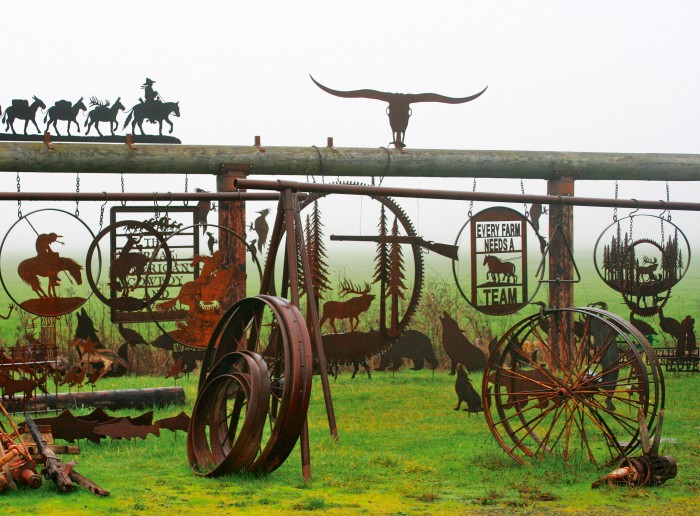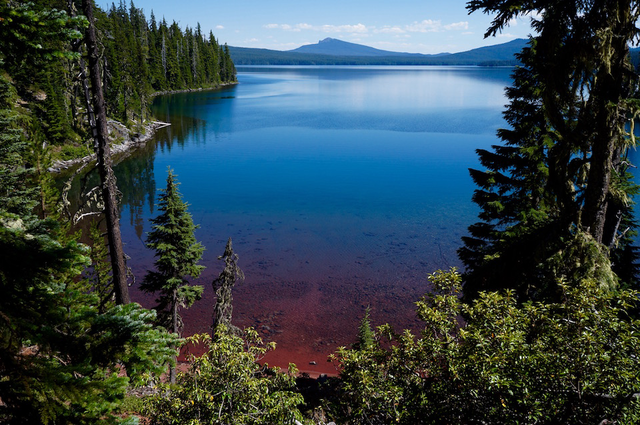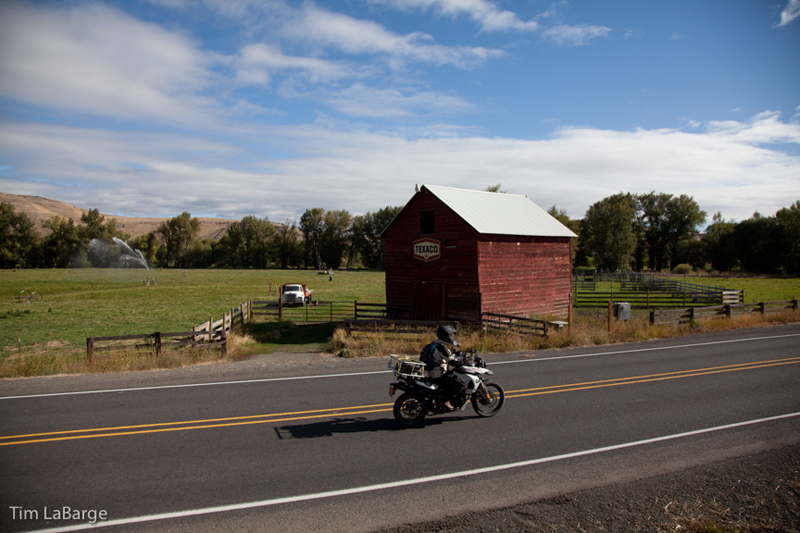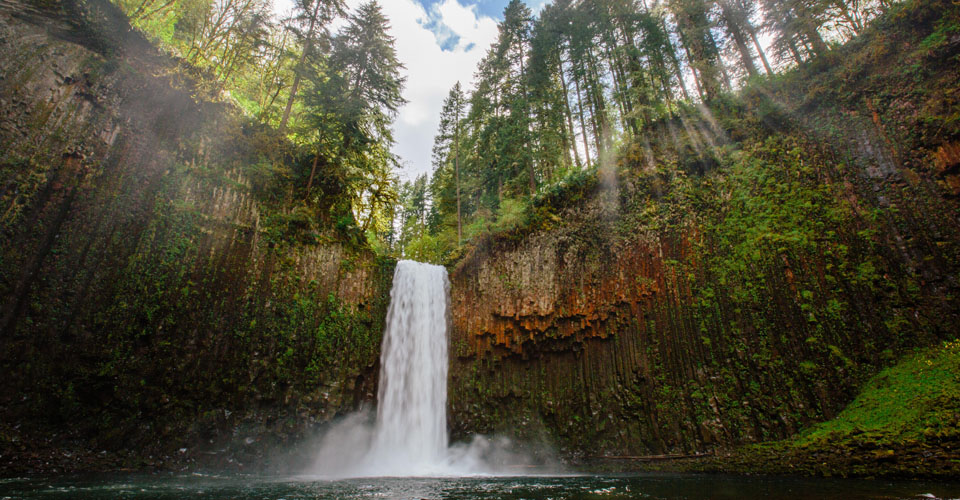Highway 99 from McMinnville to Eugene conjures images of vineyards, wildlife preserves, rolling farms, state universities and, of course, UFOs.
Forget for a moment that McMinnville is at the epicenter of Oregon’s wine culture. Let’s start with a famous piece of outlandish history. In 1950, a flying saucer visited the farm of Paul and Evelyn Trent of McMinnville. The farmer snapped two photos that later became the most famous and scrutinized UFO photos to date. LIFE magazine found it compelling enough to publish the photos and story in its June 26, 1950 edition. McMinnville now holds a well-attended UFO festival May 18-19.
Earth-travel along Highway 99 south from McMinnville, and you’re on a journey into the blossoming emerald green agricultural countryside of rural Oregon. Leave the hustle of city life behind, get off a busy interstate freeway and head south through the gently rolling hills with many vineyards and wineries.
Just south of milepost 45, you’ll begin to get a sense of what the region’s new agriculture offers. It’s the first of many signposts leading to dozens of vineyards and wine cellars in the region. Coelho, Brooks and Mystic are just a few of these wineries.
Amity is the name of both a vineyard and a city that blends yesterday and today. Its quaint main street recalls the day when this highway was the main artery from north to south in Oregon. Tourism and winemaking herald a new day for Amity defined by oenophiles.
Farther along near milepost 49, the theme continues with Cristom, St. Innocent, Zenith and Witness Tree. South of milepost 53, there’s Left Coast Cellars, followed at milepost 54 by Van Duzer Wineries, Cherry Hill Winery and more. Each of these offers something different, but all participate in an industry that produces more than two million cases of wine and contributes nearly $3 billion a year to Oregon’s economy. The 45th parallel, with its rolling hills and sundrenched south-facing slopes, produces Burgundy-like wine. Combined with gentle rains, the climate and soil are supreme catalysts for almost anything that can grow.
South of milepost 55, subtle changes begin to shape the land. At about milepost 56, you’ll arrive at the Baskett Slough National Wildlife Reserve. This is a place to get out, get dirty and spy some of the many waterfowl that call it home. There are Dusky geese from Canada, bald eagles and more.
In tiny Rickreal, the earliest politics were already tinged with hypocrisy. Nathanial Ford was the town’s first postmaster and later, ironically, the judge for the Oregon provisional government. Before leaving Missouri for Oregon on the Oregon Trail, Ford promised his slaves,
Polly and Robin Holmes, he would set them free in Oregon. Once here, however, Ford reneged. The Holmes family sued him, and the Oregon Territorial Supreme Court set them free in a case that marked the last challenge to slavery in Oregon. Less than a decade later, the Civil War broke out, and slavery ended with Abraham Lincoln’s signing of the Emancipation Proclamation.
Just south of milepost 57, there’s another reminder that the Willamette Valley was settled by rugged pioneers in search of land and opportunity. It’s a monument to James Nesmith, who traveled the Oregon Trail from St. Louis to the valley in 1843 and filed a land claim near present day Monmouth. Later, Nesmith served in a few public offices, including in the United States Congress. A burial monument there marks his final resting place.
The rural setting of this stretch of the valley runs up to the city limits of Monmouth at about milepost 62, the home of Western Oregon University, itself a relic of the pioneer era. The school was founded in 1856 and later became the first state-supported teacher training school.
Just off the highway at milepost 68 is the Sarah Helmick State Park, where you can take a pleasant break from driving and simply enjoy the surroundings as they might have existed when the pioneers first arrived. Douglas fir, grand fir, maple, ash, Port Orford cedar and cottonwood branch out over the land and offer ample shade on hot sunny days.
At milepost 72, the E.E. Wilson Wildlife Viewing Area comes into view. From upland game birds to ducks, deer, rabbit and quail, the reserve provides an interesting mix of wildlife. An interpretive trail through the reserve keeps pedestrians informed, and a wildlife informational radio station broadcasts updated information on AM 1140.
For a heartier hike, try the Peavy Arboretum at milepost 78. Old growth timber populates the route, which is an easy gravel trail. This is a good opportunity to learn how to identify the various tree species of the Pacific Northwest.
Corvallis, home of the Oregon State University Beavers, greets travelers at about milepost 80. As an Oregon land grant university, it’s situated ideally in the agricultural mecca of the Willamette Valley, hemmed in on all sides by farmers, fowl and fields. Take advantage of this bounty through the Corvallis Saturday Farmers Market, which opens in late April on 1st Street, adjacent to the riverfront park.
Finally you reach Eugene, the home of University of Oregon, and past and present track legends. Oregon miracle miler Steve Prefontaine, recruited by Bill Bowerman, who later founded Nike, would go on to break every running record he came up against and eventually himself in an untimely death. An incubator of top runners, the university produces fresh legs such as distance runner Galen Rupp and decathlete Ashton Eaton. See legends-in-themaking at the track and field U.S. Olympic Trials at the end of June in the city known as Tracktown, U.S.A. at the southern terminus of Highway 99.









